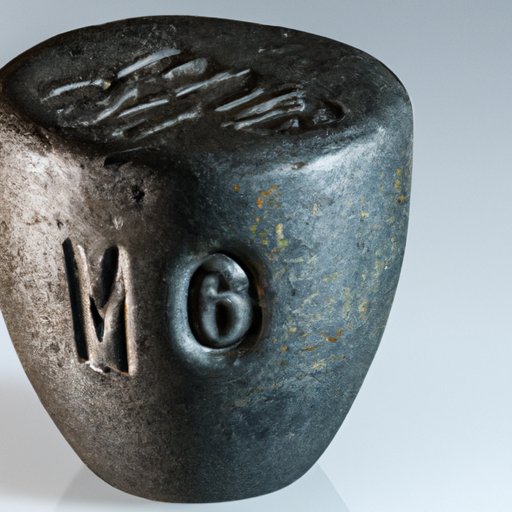
Introduction
When it comes to measuring weight, there are a variety of units that are used around the world. One unit that is less well-known in some countries is stone weight. Stone weight, often used in the United Kingdom and Ireland, is a measurement of weight that is equal to about 14 pounds. In this article, we will give you a complete guide to understanding stone weight, including its historical background, how to calculate it, and its relevance in modern times.
The Complete Guide to Understanding Stone Weight: What is it and Why does it Matter?
Before we dig into the specifics of stone weight, let’s first define what it is. As mentioned earlier, a stone is a measurement of weight that is equal to 14 pounds. So, if someone weighs 10 stone, they weigh 140 pounds. Stone weight has a long history and was widely used in the UK and Ireland before the adoption of the metric system. Today, it is still used colloquially in many parts of the region. It’s important to understand stone weight because many people still use it or refer to it when talking about their weight.
Stone Weight: How to Calculate and Convert Stones to Pounds and Kilograms
Calculating your weight in stones is relatively straightforward. Simply divide your weight in pounds by 14. For example, if you weigh 196 pounds, you would divide that by 14 to get 14 stones. If you want to convert your weight from stones to pounds or kilograms, there are conversion factors you can use. To convert stone to pounds, multiply the number of stones by 14. To convert stone to kilograms, multiply the number of stones by 6.35.
Discovering the History of Stone Weight: From Ancient Times to Modern Usage
The use of stone weight can be traced back to ancient times. The ancient Greeks used a unit of weight called the talent, which was roughly equivalent to a stone. Throughout history, different cultures had their own units of weight, but stone weight became the standard in the United Kingdom and Ireland. In modern times, while it is no longer an official measurement, many people in these countries use stone weight to talk about their weight.
The Benefits of Weighing Yourself in Stone: Pros and Cons of Using this Measurement
Like any measurement system, there are both advantages and disadvantages to using stone weight. One of the benefits is that it can be a more manageable unit of measurement for some people. Rather than measuring weight in small increments like pounds or kilograms, stone weight provides a larger and more significant unit of measurement, making it easier for some to track their weight loss progress. However, it can be confusing for those who are not familiar with the measurement and may not be as useful for those who are dealing with precision measurements, such as in scientific or medical fields.
Stone Weight vs. Body Mass Index: Which is a Better Indicator of Your Health?
In recent years, body mass index (BMI) has become a more widely used measurement of health than stone weight. BMI takes into account a person’s height and weight to determine if they are at a healthy weight or not. While both BMI and stone weight have their uses, BMI is generally considered to be a better indicator of health because it takes into account a person’s height as well as their weight.
How to Use Stone Weight to Set Achievable Weight Loss Goals
If you are using stone weight to track your weight loss progress, it’s important to set realistic and achievable goals. One tip is to break your weight loss goals down into smaller, more manageable pieces. Instead of aiming to lose a certain amount of weight all at once, aim to lose a certain number of stones first. Once you reach that goal, you can set a new one. This can make your weight loss journey feel less overwhelming and more achievable. If you need more inspiration, there are many success stories of people who have used stone weight as a measurement of their weight loss progress and achieved significant results.
Exploring the Cultural Significance of Stone Weight in Different Parts of the World
Stone weight has a long history and cultural significance in many parts of the world. In the United Kingdom and Ireland, it is still used colloquially, and is a part of daily life. In other cultures, stone weight may have different meanings and uses. In some traditional societies, stone weight is used as a part of important celebrations and rituals, such as in New Zealand’s Maori culture where carved stone pendants are used to signify different accomplishments and milestones in life.
Conclusion
While stone weight may not be as widely used around the world as other units of weight, it is still an important and relevant measurement for those living in the United Kingdom and Ireland. Understanding stone weight, how to calculate it, and its historical background can provide insight into how different cultures view and use weight as a measurement. If you are using stone weight to track your weight loss progress, be sure to set realistic goals and keep in mind the pros and cons of using this measurement.





